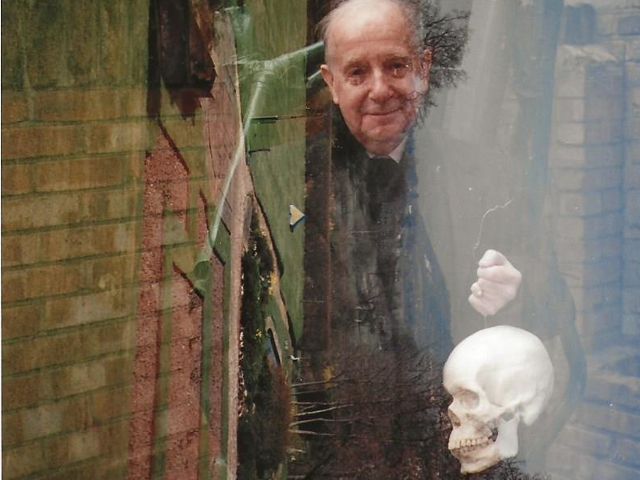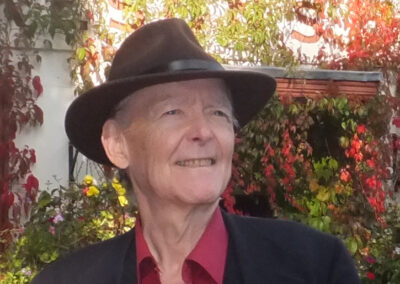Notes
The links and references below are only a toe-dip into an ocean of fresh thinking about fundamental questions.
There is a wide variety of methodology and focus in the websites listed.
There is no attempt to ‘grade’ websites or links in order of significance or accuracy. Suffice that the exponents, professionals, practitioners referenced are surely in earnest and have devoted serious thought to what they say.
Books or websites etc suggested do not imply espousal of all their contents. Their selection centres more on whether they bring up relevant points or questions of potential interest.
Some websites or links listed in one sub-section might sit equally well under another category.
The links etc are designed mainly as an introduction for a layman who wishes to reflect on the modern world of intellectual endeavour.
Specialists in a particular scientific area may feel that what is on offer here is elementary or plain wrong. They are invited to contribute their viewpoints to this site.
Perhaps every piece of relevant information is yet to be digested by any one person. This website is in the cause of providing a guide – or at least some signposts – as to what is available.
***
Scientific studies that have a bearing on
is there a fundamental animating spirit in our biological make-up? If so, what might this animating spirit be?
Neuroscience: Interpersonal Connectivity:
For many years the brain was viewed as an electrical system, a system that transfers electrical signals from key neural areas to other neural areas. A new paradigm in neuroscience has emerged. Researchers including Nobel laureate Henry Dale demonstrated that the activation of action and synaptic potentials is the result of not an electrical but a chemical release – specifically, the release of acetylcholine, which sets the electrical process in motion. The focus has changed to understanding the effect of chemicals on the brain. The activation of a single neurochemical causes significant changes to occur in the brain. The interplay between chemicals, how to excite or inhibit these chemicals, and how to provide guidelines to maximise outcomes, was explored, including by Dr Pieter Rossouw.
Complex interactions of genetics, environmental input, electrical activity, neuromodulator activity, neurochemical activity, the neural structures and pathways of the brain, and epigenetics – gene expression as a result of a person’s interactions with the environment – are not yet fully explored and illustrate the complexities of neural networks and difficulties in the quest to understand memory systems, which are the basis of pathology.
————————-
Johnjoe McFadden and Jim Al-Khalili in ‘Life on the Edge: The Coming of Age of Quantum Biology’ (Also: https://www.youtube.com/watch?v=ADiql3FG5is ) Nobody has ever made anything living entirely out of dead material. Life remains the only way to make life. Are we missing a vital ingredient in its creation?
Scientific studies that have a bearing on
Can human biology be physically changed by human intention? If so, how
The focus or centre of consciousness may lie like a radial point just outside the confines of the physical body and feed information to receptors such as the brain within the body. Professor Paul Grof, director of the Mood Disorders Center of Ottawa and professor of psychiatry at the University of Toronto, states in the Journal of Humanistic Psychology that “contrary to the assumptions underlying the biological theories of mind, the brain does not seem to play a role in the content of the non- ordinary experiences.”
————————————-
The ramifications in terms of man’s reactions to stimuli ranging from chemicals etc in human bodies to the energy and wave frequencies emitted from outside sources hold true in different ways in innumerable areas of mainstream medical studies. Stress levels – by way of just one example – are affected by cortisol . It follows that personal decisions taken, in mental terms, can be affected by altering these chemical flows within the body. In another example from a different field, humans generate electromagnetic energy or ‘noise’. A normal, healthy body should resonate with a natural frequency of 65 – 75M Hz. Human cells and for instance muscles respond to magnetic fields. Research shows that some human brains can pick up on rotations of geomagnetic-strength fields as evidenced by drops in alpha wave power following stimulus. See abstract on ‘Transduction of the Geomagnetic Field as Evidenced from 2 Alpha-band Activity in the Human Brain‘ by Professor Shinsuke Shimoto, Connie Wang, and Isaac Hilburn.
———————————————————————-
Scientific studies that have a bearing on
Do the increasing revelations about the human body including its sub-atomic parts have a relevance to what and who we are and, if so, what is it?
Scientific studies that have a bearing on
What do discoveries about natural science tell us about who we are?
Masaru Emoto, conducted experiments with water. He collected water samples from around the world, froze them and analyzed the crystals under a microscope. He compared water from clean, mountain streams to city tap water. Water from mountain streams and springs formed beautiful geometric designs in their crystalline patterns while city water and polluted water formed distorted and damaged crystal structures. The structure rather than the chemicals in water can change and water has memory. He discovered that water exposed to positive words, music and thoughts formed beautiful crystals whereas water exposed to negative words, music and thoughts formed fragmented crystals.
A large percentage of the human body is composed of water – some 70% and more – though it fluctuates downwards with increasing age – with a larger proportion concentrated in the heart and brain. See the study by James Roland medically reviewed by J. Keith Fisher, MD. It has been scientifically tested that water reacts to music. Therefore there is a physical explanation as well as a mental one as to why we react to unpleasant and pleasant sounds
PETER PROKOPKIN is known as an anarchist theoretician but in his work as a zoologist he was a forerunner of the backlash against an interpretation of Darwinism that put man’s competitive traits at the core of human nature. Prokopkin believed that seeking out conflict proved to be socially beneficial only in attempts to destroy unjust, authoritarian institutions. According to Frans de Waal in ‘The Age of Empathy: Nature’s Lessons for a Kinder Society’ research on primates shows that there is a biological basis for behaviour such as co-operation and mutual aid. Recent research into single cell organisms – in humans and other creatures – and the substances they secrete show how co-operation is a key to survival.
——————————————————-
THE WORLD OF JAMY – Animals can speak
From time immemorial a division between human beings and the animal kingdom has been illustrated and justified by the fact, so-called, that humans unlike animals have language. A few lay people may have thought this contentious but no serious scientific attempt has been made explore this assumption till now. It seemed odd that recorded human speech when speeded up sounds like the twittering of a bird with all the sounds undifferentiated or recognisable as words per se, or, when slowed down, comes across with the effect of a dog-like growl. It now appears that this pillar of a purported key difference between animals and men has crumbled. A camera was placed by a behaviourist veterinarian in the heart of animal families to decipher what dogs and cats say to each other in the absence of humans and the richness of dolphin conversation was recorded and analysed. It has been shown that dogs can understand a hundred words; cats meow to imitate our language; monkeys communicate like human babies; and birds like men have regional accents. Animals talk to each other.
Jamy’s world – Our animals have the floor streaming. (See Replay France 3 | France tv)
Dr Luc Montagnier stated that DNA produces electromagnetic radio signals which may be able to recreate that DNA. His work ‘Electromagnetic Signals Are Produced by Aqueous Nanostructures Derived from Bacterial DNA Sequences’ concludes that ‘diluted DNA from pathogenic bacterial and viral species can emit specific radio waves that are associated with ‘nanostructures’ in water which might be able to recreate the pathogen’. ‘Waves’ and ‘signals’ are thus a prime mover in actuating and explaining biological phenomena.
The theory has been critiqued by some scientists as inter alia appearing to support some of the tenets of homeopathy. Theories like that of Lynn McTaggart which deal with energy fields and magnetic attraction as a way of healing are supported by Montagnier’s findings.
While the lay jury may still be out, much care went into the theory of Montagnier, a Nobel Prize winner, as a summary of some of the experimentation as below indicates:
From a medium of white blood cells, cultured bacterial DNA (from Mycoplasma pirum and Escherichia coli) was filtered to remove all the bacteria. A polymerase chain reaction was performed, which demonstrated the absence of remaining DNA. The solution was then incubated for two or three weeks, after which the presence of bacterial DNA was again detected. Following the dilution electromagnetic radiation was detected using a Fourier analysis technique developed by Jacques Benveniste. It detected electromagnetic frequencies only at high dilutions, ranging from 10−5 to 10−12. The energetic pattern was recorded, transmitted, and used to reconstruct the DNA using brand new nucleotides. The existing nucleotides from the original sample are unaffected. In more detail the steps taken were:
1. A known water sample with 2 ng/ml of 104 bases DNA from an HIV infected patient is diluted by 10 into water and agitated for 15 seconds. After filtration to remove the DNA, the dilution and agitation steps are repeated 10 times, reaching high dilution levels of 10−10.
2. The highly diluted sample emits electromagnetic signals (EMS) of low frequencies.
3. This EMS is recorded by a microphone coil and saved as a 6-second WAV file at the lab in Paris.
4. The WAV file is emailed to a partner team at the university of Benevento in Italy.
5. The Italian team emits with a coil for 1 hour the EMS of the WAV file on a sample of distilled water in a sealed metal tube.
6. The water sample is then placed in a polymerase chain reaction (PCR) machine.
7. The PCR machine in Italy produces DNA, 98% identical to the initial DNA in Paris.
8. A known water sample with 2 ng/ml of 104 bases DNA from an HIV infected patient is diluted by 10 into water and agitated for 15 seconds. After filtration to remove the DNA, the dilution and agitation steps are repeated 10 times, reaching high dilution levels of 10−10.
9. The highly diluted sample emits electromagnetic signals (EMS) of low frequencies.
10. This EMS is recorded by a microphone coil and saved as a 6-second WAV file at the lab in Paris.
11. The WAV file is emailed to a partner team at the university of Benevento in Italy.
12. The Italian team emits with a coil for 1 hour the EMS of the WAV file on a sample of distilled water in a sealed metal tube.
13. The water sample is then placed in a polymerase chain reaction (PCR) machine.
14. The PCR machine in Italy produces DNA, 98% identical to the initial DNA in Paris.
IF the results are correct, ‘these would be the most significant experiments performed in the past 90 years, demanding re-evaluation of the whole conceptual framework of modern chemistry.’
‘Neuroscience: Interpersonal Connectivity
For many years the brain was viewed as an electrical system, a system that transfers electrical signals from key neural areas to other neural areas. A new paradigm in neuroscience has emerged. Researchers including Nobel laureate Henry Dale demonstrated that the activation of action and synaptic potentials is the result of not an electrical but a chemical release – specifically, the release of acetylcholine, which sets the electrical process in motion. The focus has changed to understanding the effect of chemicals on the brain. The activation of a single neurochemical causes significant changes to occur in the brain. The interplay between chemicals, how to excite or inhibit these chemicals, and how to provide guidelines to maximise outcomes, was explored. Dr Pieter Rossouw also explores this subject.
Complex interactions of genetics, environmental input, electrical activity, neuromodulator activity, neurochemical activity, the neural structures and pathways of the brain, and epigenetics – gene expression as a result of a person’s interactions with the environment – are not yet fully explored and illustrate the complexities of neural networks and difficulties in the quest to understand memory systems, which are the basis of pathology.
—–
An Interview with biologist Jeremy Griffiths about a book by Professor Harry Prosen That ‘Solves The Human Condition’ by homing in on the cooperative genes that underlie our evolutionary development.
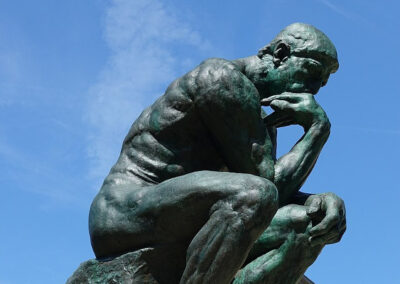
Some Science Based Theories That Should Have An Impact On Our Beliefs
Supersolids and Entanglement

Remote Viewing Astral Travel

An example of intellectual reflection brought to bear on ruminative reflection

On Science
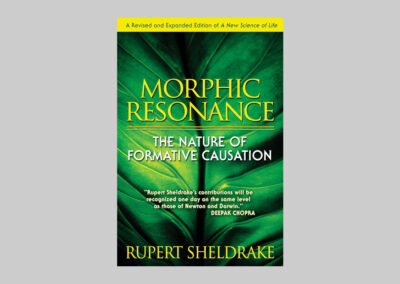
Review: Rupert Sheldrake – Morphic Resonance
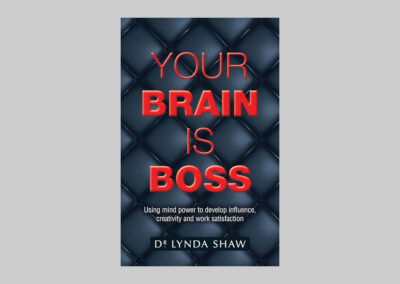
Review: Your Brain is Boss by Dr Lynda Shaw

Medicine

Scientific themed films & documentaries
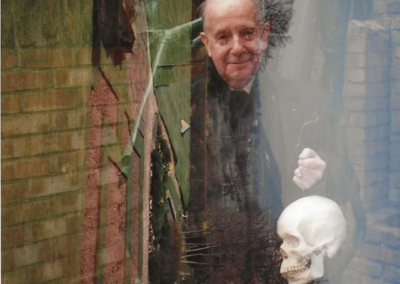
Biology and mind studies

Artificial Intelligence
How Ancient Wisdom Can Impact on Medicine
External Links
Andrew Newberg – Where Religion and Science Collide
Andrew Newberg in Principles of Neurotheology evaluates what happens in people’s brains in a deep spiritual practice like meditation or prayer. Scans show how religious practices, like meditation, can help shape a brain. He uses the advances in science such as functional brain imaging, cognitive neuroscience, psychology, and genetics. Scholarship should also engage with theological issues. –
Thoughts produce chemical reactions in the brain that affect mood and, by extension, decisions. Nerve cells are ‘wired’ together from repetition. In corroboration of the proverb ‘like attracts like’, two things vibrating at the same frequency will be pulled together. With every repetition of a thought and of how it triggers an emotion a neural pathway is reinforced. These small changes, frequently enough repeated, lead to changes in how brains work. Neuroplasticity is the ‘muscle building’ part of the brain; the things we do often we become stronger at, and what we don’t use fades away. That is the physical basis of why the repetition of a thought or an action over and over again increases its power.
Anton Zeilinger in ‘The Dance of the Photons: From Einstein to Quantum Teleportation’
Anton Zeilinger in ‘The Dance of the Photons: From Einstein to Quantum Teleportation’ and other works describes how he teleported a photon from one side of the Danube river 600 meters to the other side instantly, not limited by light speed via a process of quantum entanglement and over 143 kilometres between the Canary Islands. These experiments were inspired by John Bell’s inequality theorem which shows that instant connections over distance are possible mathematically.
DNA Field and the Law of Resonance: Creating Reality through Conscious Thought
Groundbreaking experiments on the influence of DNA on photons and on the interactions between emotions and DNA, Franckh explains how our thoughts, emotions, and beliefs, whether positive or negative, build a field of resonance around us. Through this quantum field our DNA is continuously communicating our unique vibration to those around us and receiving their unique oscillations in return. By focusing our intentions and removing negativity from our beliefs about ourselves, our past, and our future, we can use our DNA to communicate our thoughts and desires to the universe.
Dr Leaf on Neurocycle
Dr Leaf on Neurocycle, as well mind-management tools. Studies by Dr Leaf show how the brain can change with direct mind-management.
Dr. Candace Pert
Dr. Candace Pert considers the emergence of Mind-Body Medicine as an area of legitimate scientific research. Her site inter alia features discovery of the opiate receptor and medicine and the role of the emotions in health and consciousness.
The first neuropeptide to be identified was substance P, discovered by von Euler and Gaddum in 1931. However, the chemical composition of substance P was not described until 1971, when Susan Leeman and her collaborators showed that substance P is a C‐terminal amidated, 11 amino‐acid residue peptide
Explore your Mind
Explore your Mind has a range of in-depth discursive articles and lectures or how understanding how science affects our thinking.
International Neurophysical Society
Promoting the interdisciplinary study of brain-behavioural relationships throughout a lifespan and emphasises the applications of scientific knowledge.
Karl Friston’s Free Energy Principle
Karl Friston’s Free Energy Principle states that all life, at every scale of organization – from single cells to the human brain, with its billions of neurons – is driven by the same universal imperative, which can be reduced to a mathematical function. It shows how the brain operates in a self-organisational way to counter the dispersive action of entropy (the measurement of degree of randomness – the increase in the disorganization within a system.). Such a principle is necessary if we are to achieve an explanation for the way in which rational thought and memory bring about order, an essential component of consciousness. According to The Second law of Thermodynamics the universe tends toward entropy, toward dissolution; but living things resist it. We wake up every morning nearly the same person that we were the day before, with clear separations between our cells and organs, and between us and the world without. To be alive, Friston says, is ‘to act in ways that reduce the gulf between your expectations and your sensory inputs’.
Karl Pribram
Karl Pribram has conducted research into the functions of the brain’s limbic system, frontal lobes, temporal lobes, and their roles in decision making and emotion. His theory of memory and perception is the subject of numerous popular books, including Michael Talbot’s The Holographic Universe
Lamarckian Inheritance
Lynne McTaggart’s The Field
It incorporates a mechanism whereby the components of the brain act in such a way that reality, or the true state of a particular phenomenon under consideration in nature, is capable of being very precisely duplicated in holographic form by the brain. These holographic Images are created from interference patterns created by the firings and motions of connections between synapses, neurons, dendrites and any other elements of the brain’s cognitive abilities. How, and why these images are created to be near perfect replicas of reality, and not necessarily in just external representation, depends on a conjectured application of quantum entanglement. It is the groundwork for a new approach to understanding spiritual and mystical experiences
Modification of DNA through remote Intention, The
The modification of DNA through remote Intention concludes that it is possible to interact at distance on the nucleus of cells – all the billions of cells in our bodies have DNA – whose activity depends on DNA.
Modulation of DNA Confirmation by Heart-Focused Intention
It shows that there is an increase in heart coherence when people are instructed to generate feelings of love and appreciation.
Proof of Heaven: A Neurosurgeons Journey into the Afterlife, by Eben Alexander.
This is particularly interesting because at the back of the book Eben Alexander explains why mainstream neuroscience is wrong in dismissing so-called unscientific theories of near death experiences.
Rupert Sheldrake
Rupert Sheldrake in ‘A New Science of Life: The Hypothesis of Morphic Resonance’ states that “The morphogenetic fields of all past systems become present to any subsequent similar system: the structures of past systems affect subsequent similar systems by a cumulative effect which acts across both time and space.” He qualifies his thesis by stating that this morphic resonance, for the sake of simplicity, takes place only from the past, and then uses his thesis to explain a large number of problems otherwise unanswered by current beliefs in the biological sciences, such as memory and the inheritance of form and inheritance. He proposed that various perceived phenomena, particularly biological ones, become more probable the more often they occur and that biological growth and behaviour thus becomes guided into patterns laid down by previous similar events. As a result, newly-acquired behaviours can be passed down the generations. It is a biological proposition akin to the Lamarckian inheritance theory.
Science and Human Transformation
William Tiller in Science and Human Transformation: Subtle Energies, Intentionality and Consciousness reveals a framework for scientific description of nature and human evolvement. It shows people how to use their own intentionality to bring about beneficial changes… in their own bodies
Transduction of the Geomagnetic Field
Professor Shinsuke Shimoto, Connie Wang, and Isaac Hilburn show that some human brains can pick up on rotations of geomagnetic-strength fields as evidenced by drops in alpha wave power following stimulus. See abstract on ‘Transduction of the Geomagnetic Field as Evidenced from 2 Alpha-band Activity in the Human Brain‘
Why Woo Woo Works: Science Behind Alternative Thinking.
David Hamilton. His background is chemistry and has he written several books on the mind-body connection and the science behind it. It is very well researched. One of Hamilton’s chapters discusses consciousness

